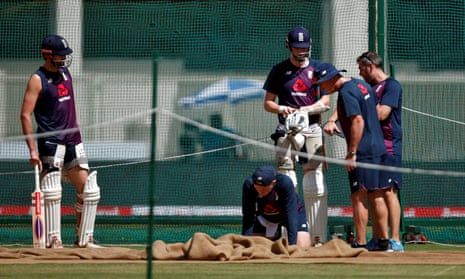“I have a question back: what is a good cricket surface? Who defines it?” – Ravichandran Ashwin
In Ramachandra Guha’s history of Indian cricket, A Corner of a Foreign Field, he describes the disdain the British showed towards the first Indians who played the game, tells how one of the very first matches between English and Indian teams was “Officers with umbrellas versus Natives with bats”, and explains the way this derision spurred the locals to take the sport more seriously.
Soon Indian firms started importing bats, balls, pads, gloves and stumps from the UK, and the local clubs began watering and rolling their wickets and cutting down the grass of the outfield. Guha writes, too, about the disputes between the local cricketers and the British polo players, and how they competed for use of the same playing fields in Mumbai.
The cricketers, who had been pushed into a corner of the Maidan, sent a petition to the governor. They argued that they would be willing to give the ground over to polo for two nights a week “were it not for the fact that the polo ponies completely ruin the turf and render the ground unsuitable for cricket”. The row dragged on for years and got so bitter that it led to the temporary abandonment of an annual fixture between the local British and Indian teams.
Because it wasn’t just an argument about divots in the outfield, but about fairness, decency and whether the British were living up to the very qualities they liked to insist their sport epitomised. “Your petitioners need scarcely remind your Excellency in Council how much good cricket depends on the state of the turf,” the locals argued in their letter to the governor, “and if any proof of the fact were wanted it would be furnished by the circumstance that the Gymkhana carefully preserves its own cricket field from being trampled upon by the ponies and even passers-by.” It was, literally and figuratively, a row about a level playing field.

It is ancient history now. Guha only found out about it all when he discovered an obscure book in a dusty corner of the MCC library. But it came to mind these past few weeks, as an example of how the past isn’t really past at all. You could hear traces of that old row in the back and forth between the media, fans and players in the last few days, in Ajinkya Rahane’s complaint that “when we go overseas and the ball seams no one talks about the pitch” and Virat Kohli’s insistence that there is “too much noise about spinning tracks” and that “if our media is in a space to contradict these views it could be a balanced conversation, but unfortunately everyone plays along with that narrative”.
The idea of the “narrative” has come up more than once. Ashwin mentioned it too, during that back and forth with an English journalist. Taken on face value, there is a straightforward answer to his question: it is the match referee who decides whether or not a pitch is good (in this case, the former Indian fast bowler Javagal Srinath). “What makes a good surface?” Ashwin continued. “Seam on the first day, bat well, then spin on the last two days? Come on, who makes all these rules?” Again, it’s right there in the regulations, which define a “Very Good” pitch as one that has “good carry, limited seam movement and consistent bounce throughout, little or no turn on the first two days but natural wear sufficient to be responsive to spin later in the game.”
The guidelines add, too, that one of the four qualities of a poor pitch is that it “offers excessive assistance to spin bowlers, especially early in the match”, with the caveat that “there is nothing wrong with a pitch that affords some degree of turn on the first day of a match”. As to where the line between falls, “it is impossible to quantify the amount that a ball is ‘allowed’ to turn as bowlers will turn the ball differing amounts. The type and identity of bowler shall be taken into account when assessing this factor.” (It might be telling, if, for example, a part-time off-spinner took five wickets for eight runs on the second day of the game).

Simple. Or it would be, if this really was a conversation about the pitch. But it isn’t, any more than it was back in the 1870s.
It’s also a conversation about the way some English fans and commentators carried on in the second Test, even though India managed to make more than 600 runs on that pitch. It’s a conversation about whether a fair standard is being applied to both sides, given that India were rolled for 107 and 130 on a green top when they played at Lord’s in 2018. It’s about whether this is yet another example of English hypocrisy, like the way in which we’ve spent years decrying the impact of the Indian Premier League on Test cricket while simultaneously trying to set up our own (ludicrous) alternatives to it. It’s about whether all this is an attempt to impose some sort of moral authority on a country that has long since supplanted ours as the most influential, important and successful in the sport. It’s about 150 years of history, of accumulated slights, grudges, wounds and scars. It’s about control.
And it feels like all this has led to the Indian players refusing to even countenance the possibility that the pitch in that third Test wasn’t particularly good, that, in fact, a lot of good judges have said in public (and private) that they think it made batting a lottery. Really, it’s not just about the surface. It’s about what’s going on beneath.

